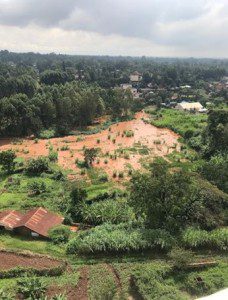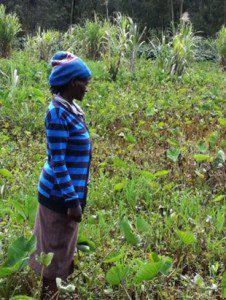News and Insights
Facing the Floods: Kenya’s Climate Change Crisis
May 14, 2024
As the anticipated rainy season descends upon Kenya, a lingering question has weighed heavily on the minds of its people: are the darker clouds and heavy winds harbingers of a destructive rainy season? Traditionally, the April rains have ushered in bountiful harvests, ensuring food security nationwide. However, with shifting weather patterns due to climate change, farmers now fear devastating floods may wash away their investments. The impact extends beyond agriculture, affecting real estate, tourism, exports, open-air-markets, transport, power, education, and health.
The National Disaster Operations Centre (NDOC) reports significant impacts from heavy rains and flash floods. Over 200 lives have been lost, with thousands displaced and many more affected nationwide. Livestock losses, crop damage, and disruptions to businesses and schools are widespread.

The human stories emerging from the affected areas paint a vivid picture of despair and resilience. In Kiambu County, an elderly lady named Wanjiru resides on the banks of the Gathara river with her young grandchildren in a two-room house made of corrugated iron sheets. As dusk draws near, Wanjiru peeks at the dark heavy clouds furiously skirting their way across the sky each day. Nights bring terror as their modest home is repeatedly inundated by floodwaters, leaving their belongings adrift. She now fears for her safety and that of the little children. “We are praying for divine intervention for our survival,” Wanjiru solemnly expresses.

Bilha, another resident, recounts futile attempts to alert authorities via social media, instead resorting to communal efforts such as digging trenches to divert flood waters away from their homes. “The government has forgotten us; it is now up to us as residents to take action, or else we might find ourselves drowning in the nearby river” she laments, underscoring the community’s sense of abandonment. Further conversations reveal that this is the first time the river has breached its banks, jeopardising lives and livelihoods built along its shores.
For decades, farming has sustained families like Margaret’s, who relied on the river to irrigate their crops year-round. Yet, what was once a golden goose in times of drought has now become a threat, wreaking havoc in unprecedented ways.
Over the ridge, another flooding hazard looms. Residents say that a dam that flows into the Gathara River threatens to overflow. The incessant heavy rains poses a potential catastrophe for them, as they anticipate its breaking at any moment.

The recent spate of extreme weather events has jolted Kenyans into a sobering realisation: climate change is not a distant concern but a present danger. The same holds true for neighbouring East African countries grappling with similar challenges. The urgency to act has never been clearer as citizens rally for preventive measures and heightened awareness.
In light of these realities, it is imperative for governments and policymakers to prioritise climate resilience, disaster preparedness and invest in robust infrastructure to mitigate the impact of climate disasters. Communities must embrace sustainable practices and work hand in hand with nature to build resilience against the ravages of climate change. Kenya, facing greater challenges in climate disaster preparedness than its economically advantaged counterparts, intensifies the harsh effects of climate change. This emphasises the crucial need for global solidarity and support to address these disparities. Only through concerted action can we hope to navigate the treacherous waters ahead and secure a sustainable future for generations to come. Given the gravity of this climate crisis, the pressing question remains: will our leaders heed our call this time and take decisive action to address these urgent issues?
